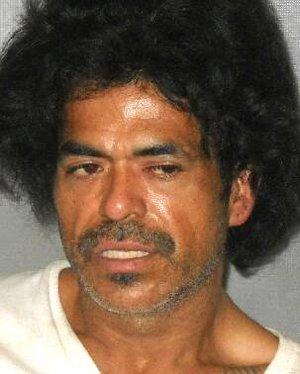LAKE COUNTY – With the governor seeking to slash social services programs because of the state's serious budget problems, advocates are concerned about the future of programs that aid young adults making the transition from foster care to independent adulthood.
Gov. Arnold Schwarzenegger is proposing to cut $80 million from the state's child welfare services, which local advocates reported would result in the loss of another $53.5 million.
Those kinds of cuts could hurt the Transitional Housing Program for Emancipated Foster/Probation Youth (THP-Plus).
Several years ago the California Department of Social Services conducted a state survey on youth housing issues for emancipated foster youth.
The agency's research found that 65 percent of the 4,355 youth who emancipated from foster care during the 2000-01 fiscal years were in need of safe and affordable housing.
In 2002, the state Legislature passed Assembly Bill 1119 to assist counties in their efforts to provide housing for this population, which resulted in the creation of the THP-Plus program, the California Department of Social Services reported. Another piece of legislation, Assembly Bill 824, passed in 2005, raised the age limit for participating in a THP-Plus program to age 24.
The state reported that 17 counties statewide – including Lake, which joined the program in 2008 – now participate in THP-Plus, with 100 housing programs established statewide to serve emancipated youth and foster children.
But this year, THP-Plus has been on the chopping block for the first time, with funding proposed to be eliminated altogether in the governor's January budget, according Patti Gorden, special projects coordinator with Redwood Children's Services Inc. in Lake and Mendocino counties.
Schwarzenegger's original cuts would have impacted 1,400 former foster youth living in the state's transitional housing program, Gorden said.
That proposal was pulled back, but Gorden said the THP-Plus program's future status still isn't certain.
Two local young people – part of the nearly one dozen in Lake and Mendocino counties who rely on the program – illustrate the program's importance and the safety net it offers, as well as its goal to help young people transition off of government funding.
One is Tamara Davidson, 18, who entered the program on March 1 with her new baby daughter, and Lawrence Lazaro of Ukiah, who turned 21 not long after he left the program this spring.
Davidson's mother died when she was 14, leaving behind five children.
Noting that she was “out of control,” Davidson said she went through “many, many” foster homes. She was released from foster care when she turned 18 last August, and afterward had been living around Hidden Valley Lake and Clearlake with her baby daughter, born in December.
The young mother had been “couch surfing” and sleeping in her car, and trying to get her diploma so she could get a job.
Then she came into the program. “They helped me right away, actually,” Davidson said.
Gorden said the program provides young people like Davidson and Lazaro with a certain amount of money each month for rent, food and utilities.
Over the 24 months of the program the young people are required to pay more of their own way, gradually removing their dependence on the program's resources. Deanna Hamel, THP-Plus coordinator for Redwood Children's Services, said the goal is to get the young people out on their own.
“I feel safer now,” Davidson said, who is thinking about studying to become a nurse.
In Lazaro's case, he entered the program at age 16, entering himself into foster care in Lake County, moving from his home in Willits.
He said his mother had been on welfare her entire life, and wasn't interested in moving up and out of the system.
Lazaro lived in dismal conditions, with seven families members occupying a rundown travel trailer in a Willits trailer park.
He didn't go to school – he stopped attending in the ninth grade and went on independent study – he had few clothes and he had watched as many young men his age went straight to jail.
Lazaro said his friends were mostly drug users; one of them told him one day “not to fall off of a cliff.”
Originally, he had called authorities for help for his mother, who was panhandling. “I really just wasn't in a good place at all” with his family, he said.
Lazaro ended up placing himself voluntarily into foster care, where he formed bonds with his foster families. He attended Upper Lake High School before transferring to Ukiah High.
At age 17, he got into the Transitional Housing Placement Program – or THPP – when he moved to Ukiah. When he turned 18, he went into THP-Plus, where he received additional help and mentoring so he could learn to live on his own, receiving job search and resume building techniques, and learning scheduling.
“They were teaching me to be independent,” he said.
Lazaro went on to get two different part-time jobs and has mentored at summer camps. He said he wants to get his associate's degree and become a case manager with Redwood Children's Services.
“I'm a really strong person now,” he said, adding, “It's really an amazing thing that happened.”
He even traveled to Sacramento earlier this year to speak to North Coast Assemblyman Wes Chesbro about preserving the THP-Plus program.
“I know I have a bright future because of the program,” he said.
“I think it would be horrible” if the program were cut, said Davidson.
THP-Plus program staff relate other stories of young people who, had it not been for the program, wouldn't have been able to finish school or otherwise have a safe place to call home.
“If they do away with this program, we have nowhere for these youth to go,” said Gorden.
Redwood Children's Services cites studies including one that showed that only 10.8 percent of youth who “age out” of the foster care system without continued support will complete high school, which is a number that's less than half the rate for their peers of the same age and race. In addition, only 2 percent of that group would ever graduate from college.
The John Burton Foundation for Children Without Homes reported that former foster youth were 2.8 times more likely to be arrested and 70 percent more likely to be incarcerated.
Advocates also point to a 2009 study conducted by the University of Washington's School of Social Work, which found that caring for young adults until the age of 21 will represent a return of $2.40 on every government dollar spent in California.
Gorden said there is a hopeful piece of news on the horizon in the form of AB 12, the California Fostering Connections Act.
AB 12 – which would begin no later than July 1, 2011 – would and extend foster youth support to the age of 21, according to the bill's language.
Introduced in October 2008 by Assembly members Jim Beall Jr. and Karen Bass, the two-year bill continues to work its way through the Legislature.
It's set to go before the Senate Judiciary Committee on June 22, according to the State Legislative Counsel.
E-mail Elizabeth Larson at This email address is being protected from spambots. You need JavaScript enabled to view it. . Follow Lake County News on Twitter at http://twitter.com/LakeCoNews and on Facebook at http://www.facebook.com/pages/Lake-County-News/143156775604?ref=mf .









